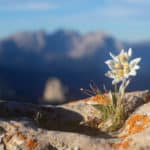This article is about exotic house plants from a beginner’s perspective.
The word “exotic” often conjures up images of distant lands, but it can also refer to a type of plant that is not native to the area. For example, an exotic houseplant might be one that was brought in from another part of the country or even another continent! This could include African violets and dracaenas—both popular choices for beginners looking for easy-to-grow houseplants.
However, there are many other types of plants with similar characteristics which might be more suitable if you live in a colder climate or have minimal light indoors. The following list includes some good examples: ferns (try Boston fern), cacti (e.g. Schlumbergera), and succulents (e.g. Adromischus cooperi).
Air plants (Tillandsias )

Air Plants are perhaps an epicenter of lower-maintenance gardening. They don’t need substrates, and neither do they need real soil. And they are quite resistant to pests, needing much attention and maintenance. They can be attached to walls or rocks using mosses, lichen, epiphytes, and so on.
Air plants can be grown from cuttings as well as layering and division of clumps. Air Plants do not grow larger than about 6 inches, so they need to be propagated occasionally.
Air plant care is effortless and can be done sitting in front of the TV. Air plants should regularly be sprayed with water making sure that each leave is well moistened. They will thrive as long as you mist them daily and keep them out of the direct sun.
Air plants like temperatures between 55-75 degrees F, but they can tolerate temperatures of up to 90 degrees without any problem at all. The most important aspect of growing air plants is a suitable environment: bright light without direct sunlight; no drafts or cold spots; high humidity without being soggy; fresh air (not stale); protection from dust, dirt, smog, etc…
There are various display styles available, as you can actually keep them at home as long as you have room to spare. In the wild, these plants adapt much the same to the bare branch/branches/ power line where and whenever.
But they don’t have roots to get water either from their leaves or their atmosphere.
They’re very hardy and versatile and can easily be used in interior decoration. Their outlines can be endless and mature ones will show some gorgeous wild-looking flowers.
Potted Dwarf Citrus Trees
If you like another aesthetic dwarf, citrus trees are a fantastic selection. They produce perfectly fragrant blossoms, and your house smells like Tropical Magic under winter.
The bigger the pot you put it, the bigger the output and the more fruits they yield. A pot up to 1 in diameter and 1′ deep should be a good starting point. Go bigger if you want.
Keep in mind it makes a bigger tree. The entire tree is great in a pot indefinitely because the fruit can be normal-sized, and yet the tree itself produces.
Orchids
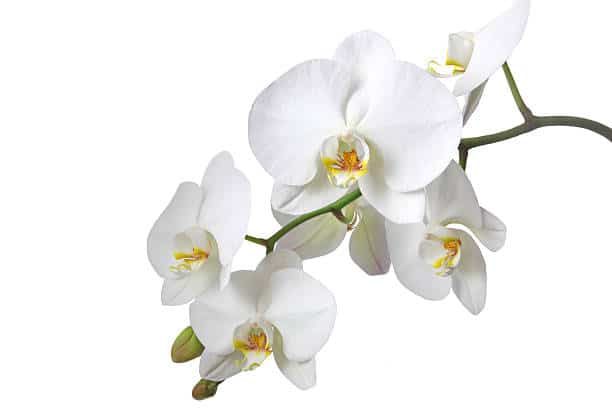
The overly complex orchid grower stereotype is a consequence of the past, where strict control of rigorous environmental factors was the only way to start germination and growing.
The most commercially available varieties are tropical Epiphytes (plants designed to grow directly under the surface of other plants without soil).
You can’t ask for a plant that lives better altogether. Keep a lookout for orchids. They don’t like being snuffed out. And if you kill them, you will usually be hit by blooms.
Carnivorous plants
The carnivores like living on surfaces that have little nourishment from soil’s nutrients.
Some people rely only on the sticky secretions to put their victims down in their place, and some eat as they wander a little farther.
Some carnivores like sundews and pitcher plants are also good for beginners.
The seedlings do very well in the water while there is no need for special substrate and other tricks that keep them happy because it’s simple to get everything they need.
And if they’re in contact with light but not with the soil surface. This also means no more fertilizing plants or feeding them themselves.
Anthuriums
Anthuriums are naturally found in South American forests growing. The exotic houseplant has gained popularity due to its large leaves and delicate flowers in the past.
What’s the biggest part? In winter, this beauty still blooms! When you buy some good-quality humidifiers to dry good soil, you have the moisture needed.
This exotic species can produce rounded fruits and also produce curving flowers and fruits in excellent conditions. In ideal conditions, they appreciate high humidity the direct sun, and so water has become a must in an indoor setting.
Begonia
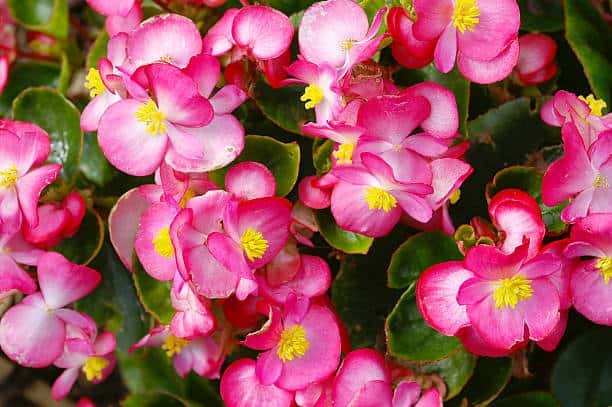
Begonia’s family is an excellent addition to my collection. These houseplants have a delicate and crinkled stem that is suitable for all types of indoor environments. Light and water are essential for the growth of any begonia. Begonia usually starts small, so a good-sized pot is essential. The blooming period of the plant is usually early summer until early winter. Feel free to add every month a fertilizer for these blooms, so they are more colorful. Luminous colors are available: violet, red, yellow, violet, and even pink! They also have lovely blooming flowers reminiscent of roses.
Ficus Family
Ficus varieties of plants grow anywhere in the world, and some produce fruit when grown outdoors. It’s a secret trick to their care to stop moving things too much.
This plant will appreciate timed watering in filtered sunlight (and sometimes some prayer. Indoors bright indirect light and weekly watering are more than sufficient. Some tree Ficulus produce fruits when it has cultivated outside the shade.
I have a tropical collection that Ficus is just what you need to build a tropical plant collection, but I’m not sure where to start with tropical trees.
Alocasias
The Alocasia family belongs to a special range of plants whose management is notoriously hard. With proper lighting and irrigation techniques, these household plants are surprisingly easy to grow. Alocasias thrive in rainforests and are often located under forest trees, so they receive filtered and sharp indirect light.
The common characteristic of Alocasia is that the leaves have a large, pointed apex and are often edged with white edges. The color ranges from dark green to black or even variegated.
This means the water they get is concentrated, and soils are always moist and humid. You won’t be disappointed by its exotic foliage: it’s gratifying to grow Acacia if it grows its leafy leaves because of how much effort it takes to grow them for its leafy leaves.
Aloe Vera
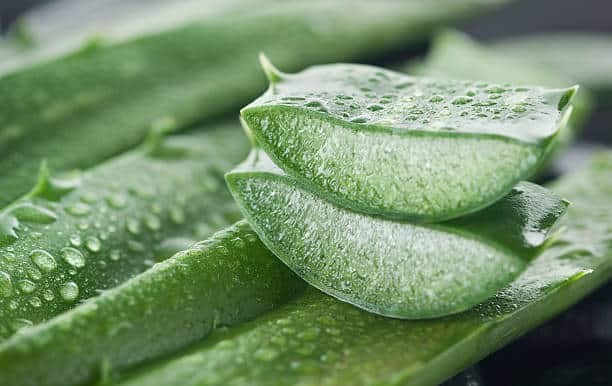
Ever heard of “Burn Heal”? These plants can turn all this into aloe juice! For centuries, this plant has been used in traditional medicine as a skincare treatment for chafing burns with no side effects, including sunburns. Still, it does not stop there – it is notorious for its medicinal properties and therapeutic benefits such as fever reduction and detoxification.
To help your houseplant along, keep in mind some critical factors: try to place them on heat-absorbing tiles near windows (overnight in summer, the heat will radiate).
There are actually some simple things to do if you want your plant to live longer and healthier. The most popular way of applying aloe vera is by drinking mashed pulp as a tea or juice extracted from fresh leaves, but it’s best not to drink too much of the leafy part of the plant because it could be bad for you.
To avoid this type of problem, try using only the green and white parts (the main active ingredients that have been found in diet extracts) and then use other recipes with Aloe Vera, such as smoothies filled with superfoods!
Monstera Deliciosa Fruit Tree
The Monstera deliciosa fruit tree is delicious for its fruit, which tastes like a delicious combination of melon and mango.
The same way to use aloe vera can be transferred to Monstera deliciosa because it is equally useful for its healing properties. The fruit juice is refreshing, and it promotes digestion when used as a tea or infusion. Soaking the leaves in water also relieves irritated skin due to sunburns and other dermatological pathologies such as eczema, psoriasis, etc.
Most people grow this plant outdoors, but if you don’t have enough space available, you can still enjoy its benefits by growing them indoors on a sunny window sill; pruning every 3-4 months will keep your tree vibrant and healthy!
Ficus elastica
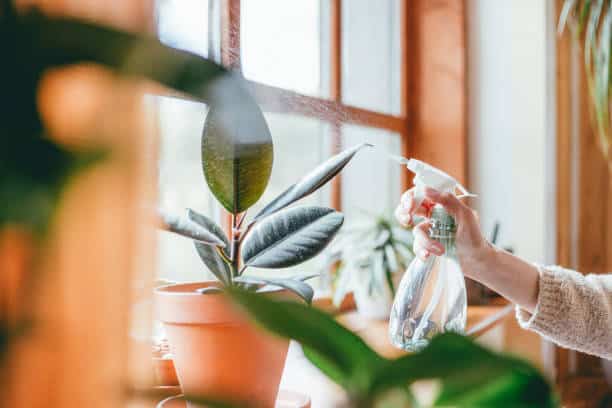
Another variety of Ficus is the rubber tree. If you want to try a tropical indoor, that’s easy to grow; this is probably one of the best options for you.
It can be kept alive with minimal care, and it does not need much space to live! It grows faster than most varieties and has an interesting trunk shape with aerial roots hanging from its branches, making maintenance more complicated.
However, Ficus elastica stops growing when exposed to direct light, so keep it in a spot where the sunlight will not burn before planting.
Succulents
Succulents are known for their ease of care and sweet devotion to neglect. Almost all succulents love dryness and sun exposure. Full sun is good for most types.
Partial shade is good too. Give these beautiful creatures a little sun, and you’ll keep them hydrated twice a month. Their only demand is good soil: tons are perlite and sand.
Some, such as portulaca (Portulacaria Afra), will soak up a lot of water and can become quite large, so make sure to select one that fits your space.
In addition, they are susceptible to pests and diseases growing indoors or outdoors, but the extent is usually minor. This does not mean you should neglect them; never leave them unattended for prolonged periods of time – this is when all sorts of infestations may occur!
Aeonium

The succulent Aeonium has an interesting architectural structure suitable for small spaces and interiors. It can be used in hanging baskets indoors or outdoors on patios to receive full sun throughout the day. The most popular species include Aeonium Arbore.
It does not matter the fertilizer for these plants to flourish. Give them lots of sun for success but use no fertilizer. Your plants can adapt to nearly any environment. The Aeonium, in particular, is a great choice for beginners because it adapts easily to any condition.
Aechmea Foliage Plant
The foliage plant Aechmea (tillandsia) needs lots of sunlight but not necessarily watering all the time. Unlike many other varieties that need water frequently, this one can survive without much water and still look good for months.
If you forget to water your plants, they will learn soon enough to remind you by drooping. This plant likes bright light – morning sun is best – but avoid afternoon or full-sun exposure on hot days; otherwise, it may burn leaves (the burning of which usually results in black spots).
It also prefers cool temps at night, closer to 40 degrees F; the higher the temperature, the greater risk of burning. Using a humidity tray will help maintain humidity levels within this plant, but it does not have to be placed in the tray for long periods of time simply because it is not necessary.
Flowering Plants
Cacti & Succulents There are many varieties of flowering plants that need little care and light. For example, orchids require very little water and still look good with only once-a-week watering.
Right before, they start to like a bit more attention, though, because they don’t like wet roots for prolonged periods of time, avoid overwatering at all costs! If you want your plants to live longer, avoid large, shallow containers by using medium-sized ones.
If they come with a tray, use it for the most part. Succulents and other similar plants will need little water. Water the soil, not the plant itself (to avoid contamination).
Mums With their elegant flowers, mums tend to look best in pots or hanging baskets so they can spread out a bit. They are cold-sensitive plants that require at least six hours of sunlight per day; more is preferable if you want them to last longer and grow well.
If you have colder nights than this variety can survive, keep your plants inside until daytime temperatures rise above 45 degrees F at night without freezing temperatures present for extended periods of time! This plant needs moisture but is not over-watering.
Don’t let the soil dry out more than halfway; otherwise, you risk their health. Water thoroughly and allow it to dry out again before watering next time. Letting plants dry out between waterings will help prevent root rot.
Just light watering should be all your plant needs; overwatering can cause root rot, which is fatal to many types of houseplants.
Conclusion:
In conclusion, keeping a plant alive is not that hard. If it’s too much trouble to take care of a houseplant, then don’t invest time and money into one! Work with what you have, either by getting something more suitable or finding new ways to keep it thriving in its current condition.
If you really get hooked on plants as most people do, you will make them happier instead of expecting them to adapt to your lifestyle! Once you find the right conditions for each one, they can live a long life with minimal effort from you.
Don’t forget:
– Use air plants carefully so they can last longer. The best way to make any form of living material survive longer is to give them credit for their needs.
– Choosing plants that are native to your area may be a good idea, as they tend to adapt better (for example, the Aeonium succulent is found in desert climates).
– Water-based on the quality of soil and when it’s thirsty. It was important for people to find out how much water their plants need. Not watering enough can cause root rot and other serious complications. Overwatering leads to poor drainage and may also lead to root rot or fungal problems.
Ensure you know what kind of plant you have; this will help prevent over-or under-watering by using proper watering methods accordingly.
To get a good effect from less work, try getting air plants!






